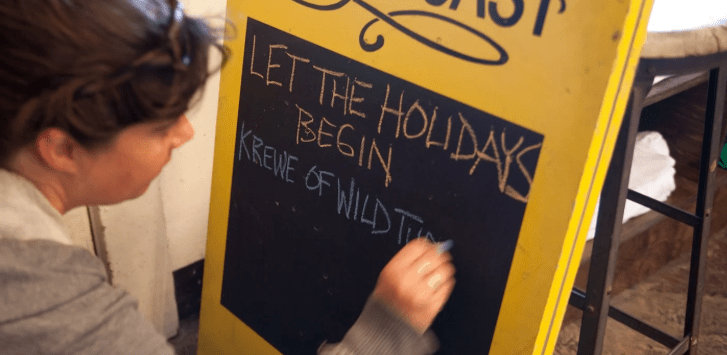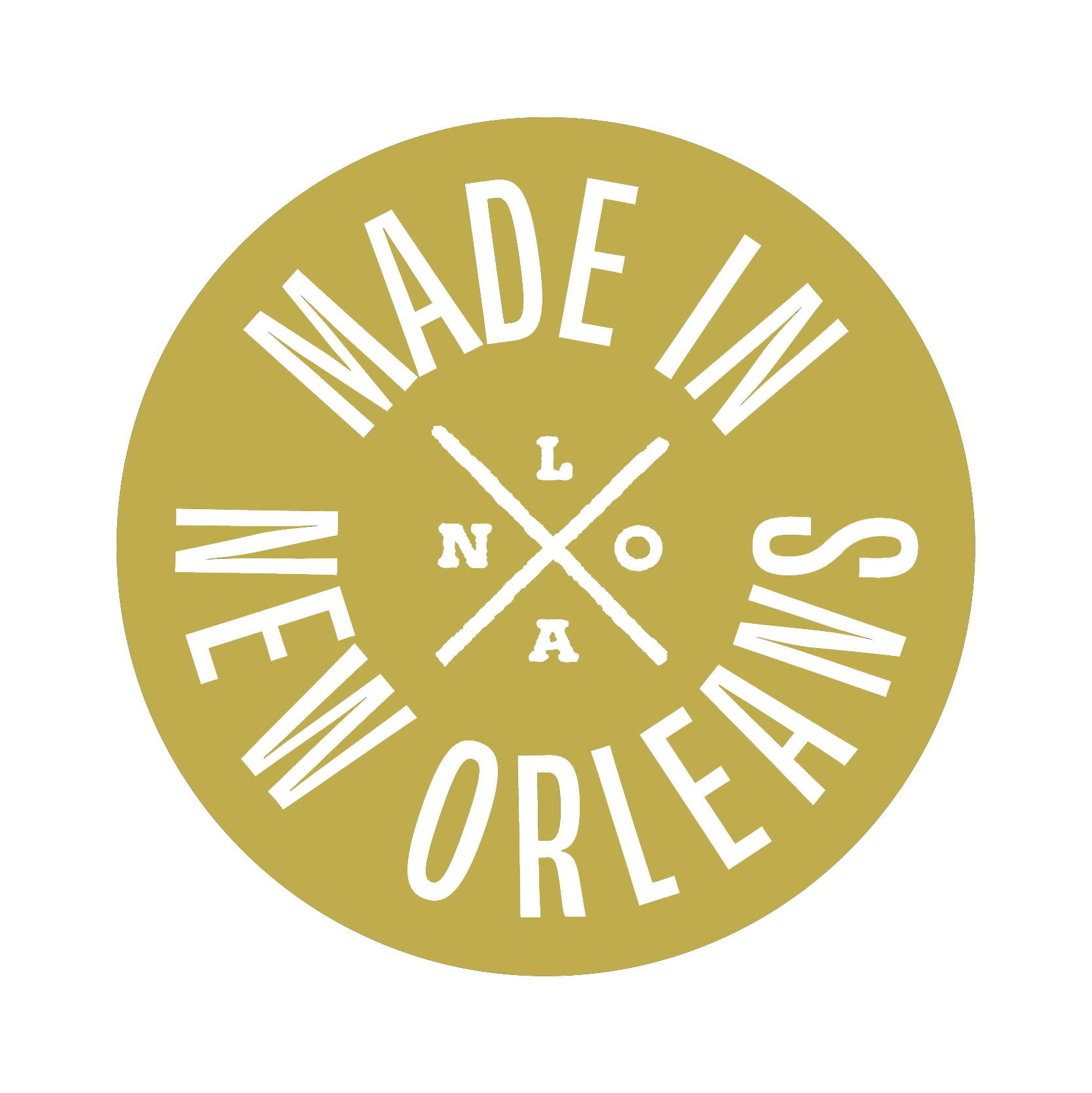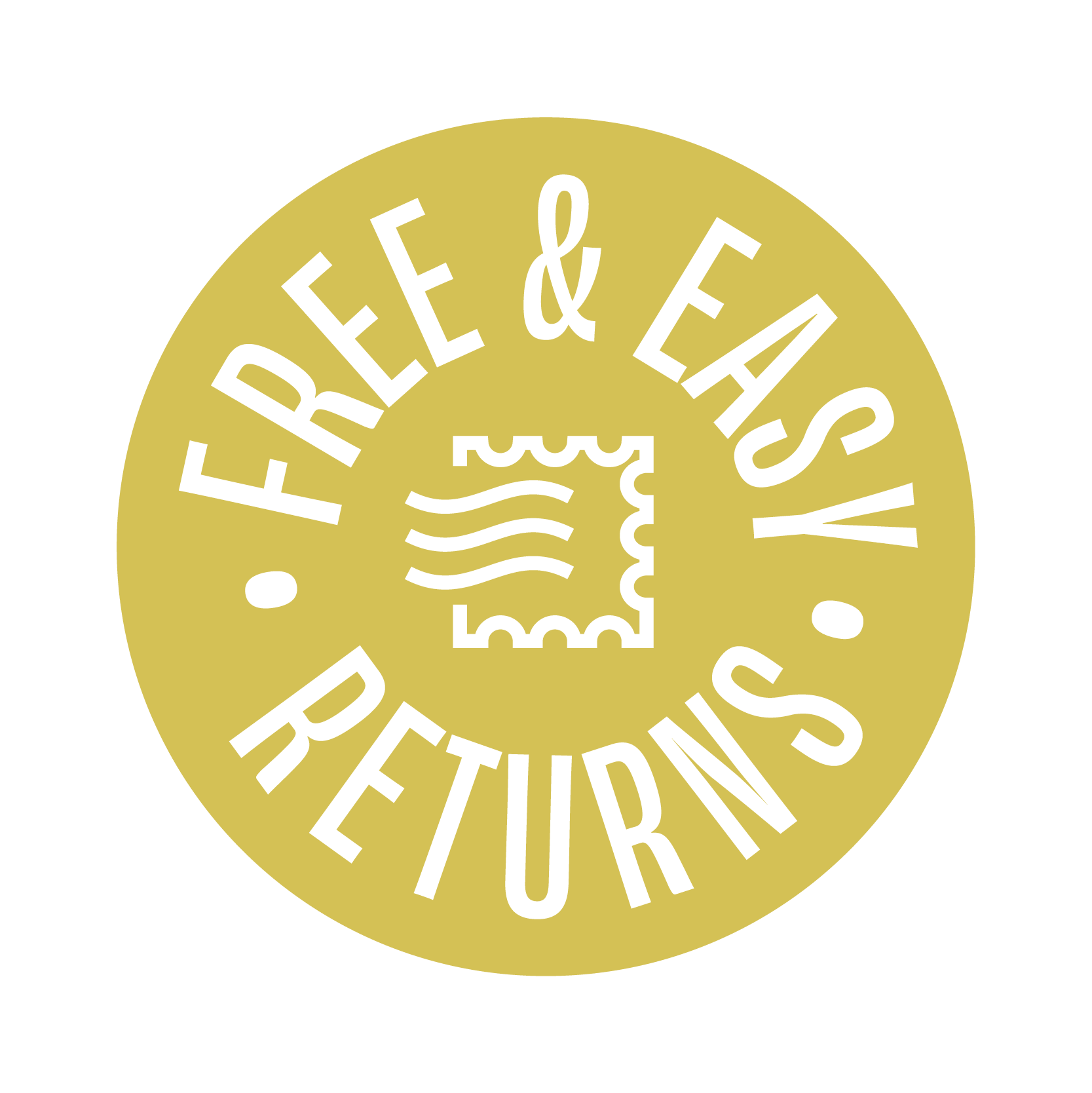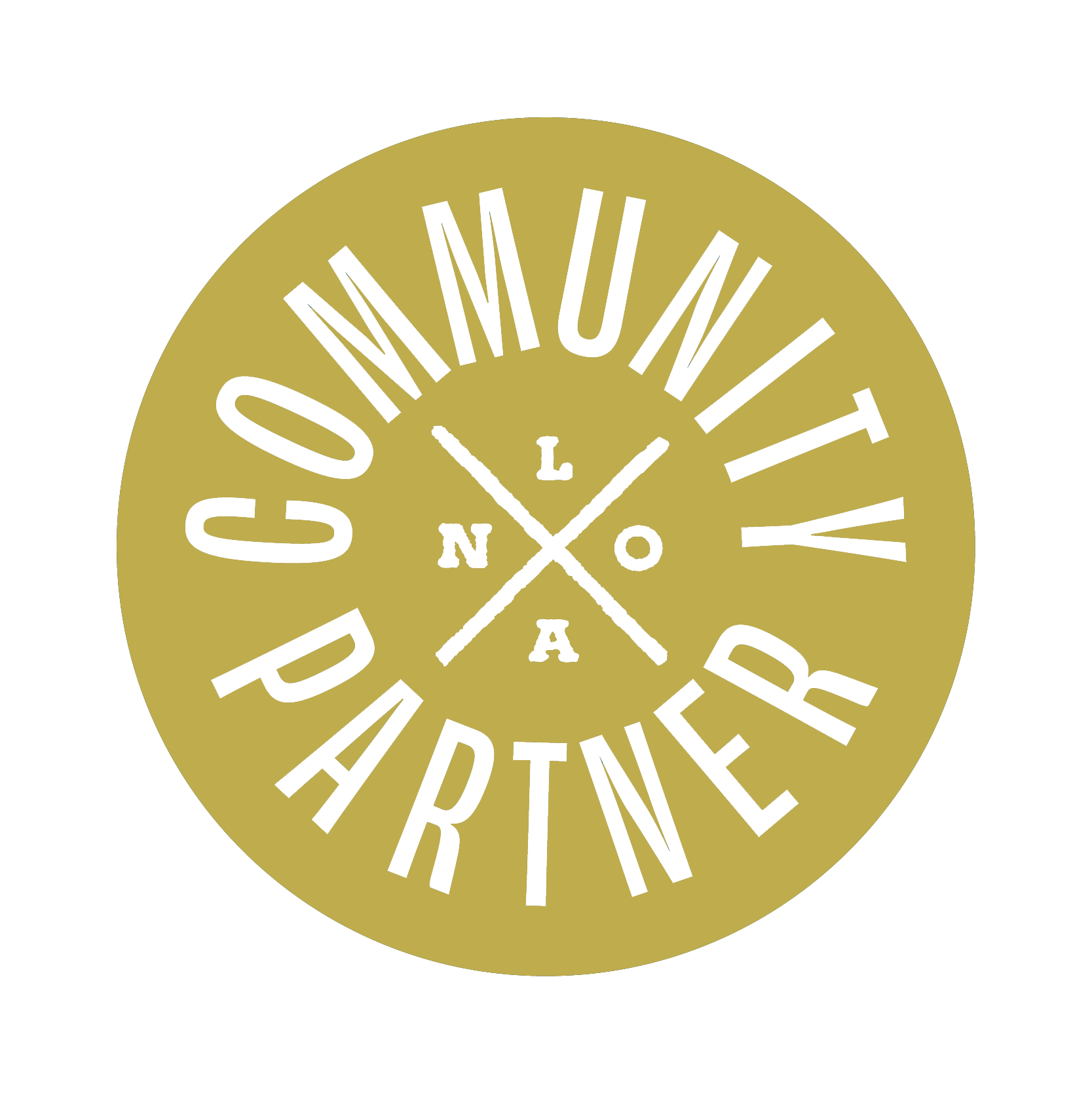Our full time screen printer since 2008, Michael’s business Purple Monkey has grown along side ours. He has helped us with not just Dirty Coast products but also the production of many items for our other company, Bayou Brands. Here he chats with Rachel about getting started.
Rachel
Okay—how did you get into screen printing?
Michael
I’d just moved back from Mexico after a couple of years there. This was 2002. I went to LSU after a few not-so-great jobs and started pursuing a master’s in Spanish—maybe even a PhD. But the more I taught, the more I realized it wasn’t what I wanted. I was getting a little disenchanted with the whole track.
When I was a kid, my mom ran a convenience store. She’d order these boxes of fuzzy iron-on letters from Stahls’. She’d lay out “Billy’s Birthday” or whatever on a T-shirt—it was super retro and really cool to me. I started playing with it, too. I had a girlfriend who loved Rocky, so I made a shirt that said “ROCKY,” and I cut tiny boxing gloves out of red felt and attached them at the top of the “Y.” We’d do little weird projects like that.
Rachel
The iron-ons! I did that in high school. That’s fun.
Michael
Totally. I also remember my mom ordering novelty transfers for a local bar. One of them read “Pastime Lounge—Liquor in the Front, Poker in the Rear.” She was probably on her hundredth shirt before she stopped, looked at it, and went, “Oh. My. God.” (laughs) That’s when it hit her what it actually said.
Rachel
So, did she have all the equipment in the store?
Michael
It was more of a heat press in the back. The corner store was on Highway 80, which had basically dried up after the interstate went through. It turned into almost nothing out there. We were trying to hang on, and my mom wanted a better avenue for making money, so she started doing shirts—family reunion tees and things like that.
Rachel
So you got it from your mama.
Michael
Basically. She was the driver. My dad handled decisions, but for a while she’s the one who helped make it successful.
Rachel
Go figure—a woman organizing things made it more successful.
Michael
Yeah. The store was kind of a revolving door. It went from a pizza place to a daiquiri hut to a sports grill.
I grew up working around all of that.
Rachel
That’s wild—you really had to be a jack-of-all-trades.
Michael
We had Shoemaker’s Lounge next to Shoemaker’s Fast Stop—a pool hall where you could practically cut the cigarette smoke with a knife on a Saturday night.
Rachel
So your family owned the building and would try different businesses?
Michael
It used to be a drive-through liquor spot. We put up a wall, added a pool table and a jukebox. People would be playing craps out back. Someone even got stabbed with scissors outside once. It was bonkers.
Rachel
Sounds like it prepared you for adult life.
Michael
It definitely opened my eyes. My dad said, “Look into screen printing.” They were doing okay with it, so I bought a little press—this was right after Katrina, when I was in Baton Rouge.
We started super scrappy—working out of my roommate’s bedroom. I’d coat screens in the bathtub and stack them to dry. I still have the little wooden sticks I cut to prop them—twenty years ago now.
Michael
My friend Derek’s girlfriend—who became my business partner—helped us land a small job making polos. We got a flash dryer, cranked them out… honestly, I’m sure some of that ink washed right off after the first launders, but nobody seemed to care. It was a thousand-dollar job to us, and I used that money to buy the next piece of equipment.
We started super scrappy—working out of my roommate’s bedroom. I’d coat screens in the bathtub and stack them to dry. I still have the little wooden sticks I cut to prop them—twenty years ago now.
Rachel
How old were you then?
Michael
I was 27. After grad school I got a job at Key Graphics doing screen printing.
Rachel
Where was that?
Michael
Baton Rouge. I had to be humbled—coming out of grad school with no real prospects. I told myself, “Take it on the chin and learn.” I made basically nothing—like five bucks an hour—but I was there for the experience: How do they do this? What’s going on back there?
I learned a bit, then quit and started taking small jobs—like 12-shirt runs—where I could actually make a little more. Back then I had no kids, just me, ramen, and PB&J. Rent was $250 a month, so we could keep costs low and grind.
Our friend Brad Jensen—well-known in Baton Rouge, a super-talented artist and big BMX guy—commissioned us once we had the press I’d bought. I remember taking a $5,000 loan from a friend-of-a-friend, David Braden, who’s still my banker today.
Rachel
Where did you put all the equipment?
Michael
We moved out of the bedroom and into a garage. We found a house on Nicholson in Baton Rouge with a perfect garage—there was a little nook in the back. I remember cleaning screens for hours, listening to “Lazy Eye” by Silversun Pickups on repeat. That was my ritual.
Michael
I just knew it was better than a nine-to-five. I’d tried the other stuff. This way, I could hustle—cold-emailing while half-watching Hell’s Kitchen.
Rachel
I was going to ask—how were you getting clients?
Michael: Cold calling and cold emailing. I had a template: “Hey Katie—We’re a new screen-printing company in town. If you need a faster turnaround…” and so on. I just kept sending and following up.
Rachel
Nice—that’s cool.
Michael
Like I said, I had no bills and all the time in the world. If I landed one client that day—or even that week—it was enough.
Rachel: When was your first big gig?
Michael
I’d say BRPT—Baton Rouge Physical Therapy. They were shopping around and it was a few hundred shirts. I was like, “Oh my God.” They were definitely a catalyst before Dirty Coast.
Rachel
How did you meet Patrick and Blake?
Michael
I got a box from Brad Jensen for his ICON brand stuff, and it had Patrick Brower’s name and number on it—he was Blake’s original business partner. I called him because the contact was on the label in case the box got lost. I said, “Hey, this is Mike—we print stuff, and I’d love to print directly for you.” At the time, everything was flowing through Brad to us, and I told Brad honestly, “Look, I want to print for them. We’ve got the setup; I don’t just want to print just your designs.”
I’ve always been upfront about that kind of thing. Brad basically said, “I can’t stop you—I wish it all went through me, but I get it.”
Rachel
So you met Patrick first.
Michael
Right. I met Patrick first. I’d come down to New Orleans, and one time I saw someone wearing “It’s Not Beautiful Being Easy.” I loved that shirt. We were also printing for a place called Storyville, and they were selling some Dirty Coast designs wholesale.
We wanted to move to New Orleans because Baton Rouge felt corporate. You could print for “31 flavors,” but there was no Hansen’s Sno-Bliz. We knew New Orleans had that, plus all the festivals.
Michael
At one point, we thought we’d build our own brand—Purple Monkey—kind of like what Dirty Coast was doing. We made a few designs and got them into Storyville, but it wasn’t enough volume. I realized I wasn’t the creative engine for that side; I’d need a designer. What I really loved was making the shirts—not running a brand and getting product into stores.
Michael
I didn’t like trying to sell our own designs to shops. I preferred the client work—the BBQ guy who needs a logo on a shirt. That part of the business made sense to me, so I leaned into it.
I met Patrick first. I actually sought him out at Chelsea’s when he came to Baton Rouge. He knew Helen, who I knew through Quintin.
Patrick had us print the “Make Wetlands Not War” design. We were using water-based inks—which not many people were doing then—and producing oversized prints that the automatic machines couldn’t handle. We’d do complicated foil jobs too—forty in a day sometimes. Back then I had the time and almost no overhead.
We went to New Orleans for the Alternative Media Expo, and that’s where I first met Blake—he was at the Dirty Coast table. After that we printed “Grey Is Graffiti” for them and did an oversized print of Brad Jensen’s “Nola Gothic.” It was massive.
Blake was great—he sent us lots of work. “Bucket Brigade,” introductions to new businesses… the volume helped us scale up our equipment, improve turnaround, and lower prices for him.
Then Blake called us one day and said, “Dude, I’ve got this Flavor Paper space my friend Jon Sherman wants to rent out—want to take a look?” We went to check it out. We already had a pretty cool spot in Baton Rouge—we’d made the most of it, almost like an art gallery. We felt like the hip kids; we thought we were super cool.
Rachel
Because it was cool!
Michael
A lot of people liked that space. We’d throw really nice parties, do fun printing—it became a whole scene, honestly.
Then Blake called again and said, “You really should come check out this Flavor Paper space.” We checked it out, but the rent was way too much for us. Then Flavor Paper offered to share the space and split the rent.
Rachel
Where was that?
Michael
In the Bywater. They had a big wallpaper print table there. Alton was there printing fabric; we tried printing fabric too.
We wanted to move to New Orleans because Baton Rouge felt corporate. You could print for “31 flavors,” but there was no Hansen’s Sno-Bliz. We knew New Orleans had that, plus all the festivals.
With Dirty Coast, it’s been a great relationship. Blake was great about sending business. We have always made them a priority. I’ve watched both of our businesses grow from that little hut they had at the end of Magazine Street.
Rachel
What’s your favorite Dirty Coast design of all time?
Michael
Acadiana Self Reliance. It’s so simple—bam, one color. I’ve always loved it.
Rachel
Which design have you printed the most?
Michael
Maybe the PoBoy Patent—it’s been around a long time.
Rachel
We also wholesale that to some folks. Thanks for chatting with me about all this.
Michael
Absolutely.







Leave a comment
All comments are moderated before being published.
This site is protected by hCaptcha and the hCaptcha Privacy Policy and Terms of Service apply.